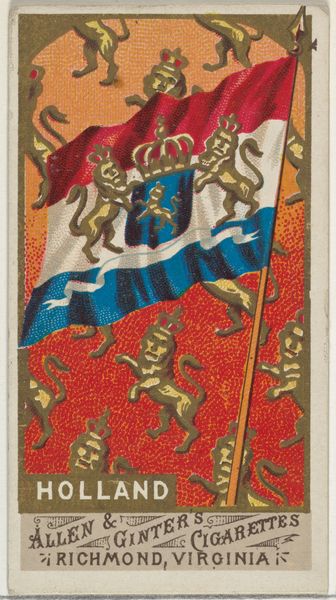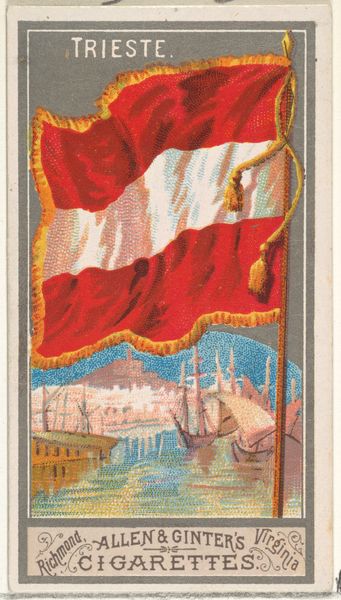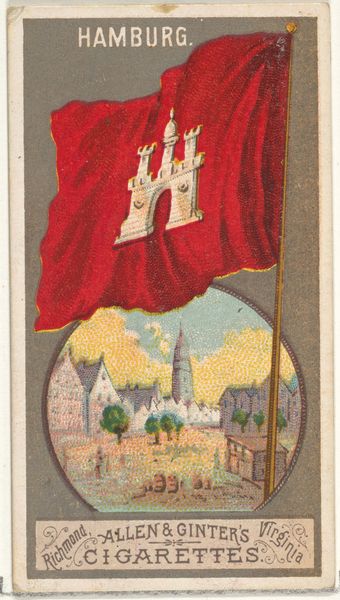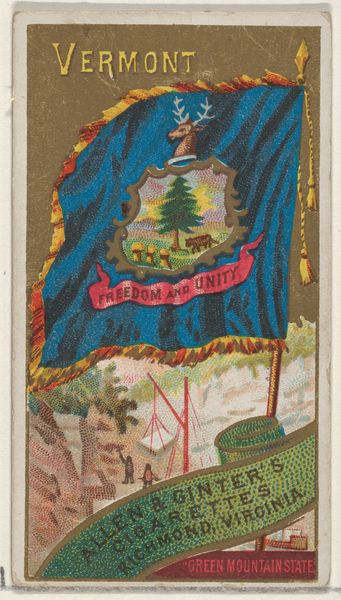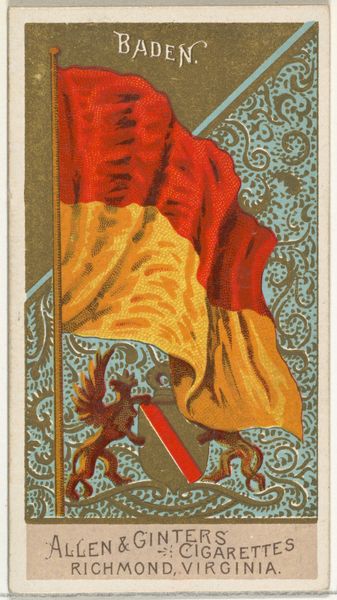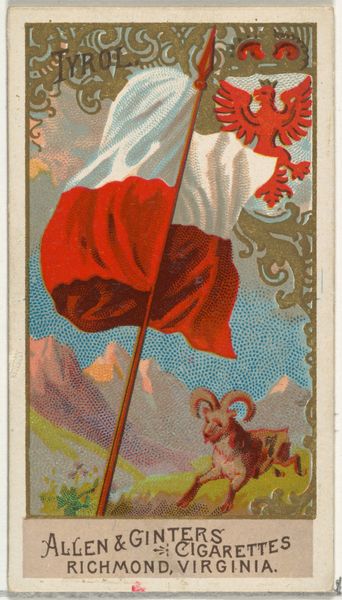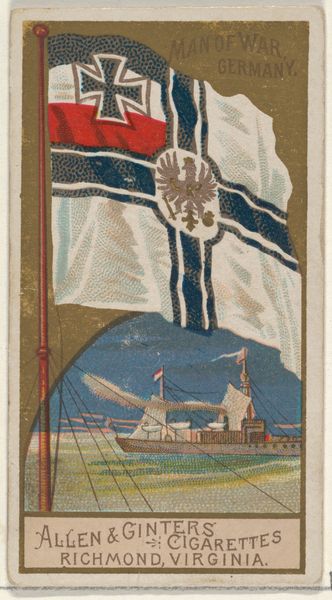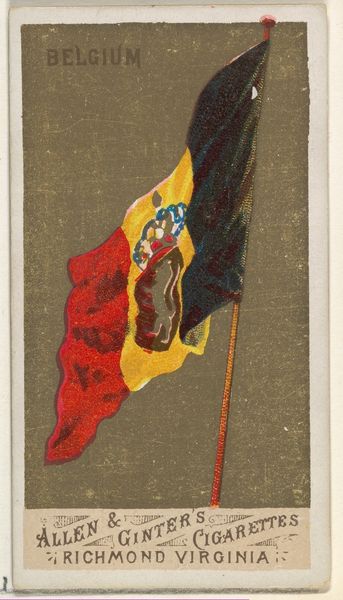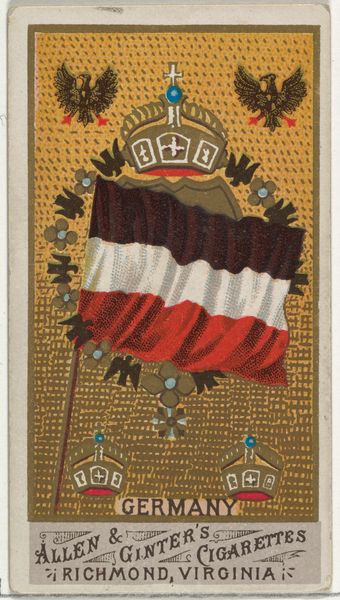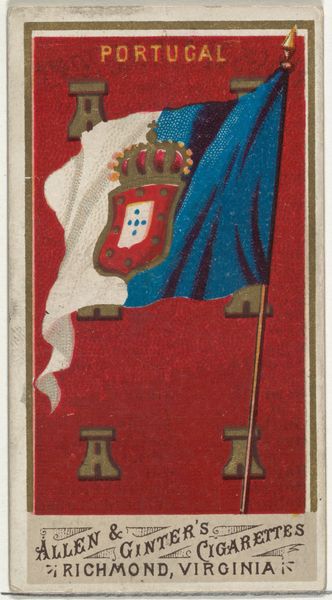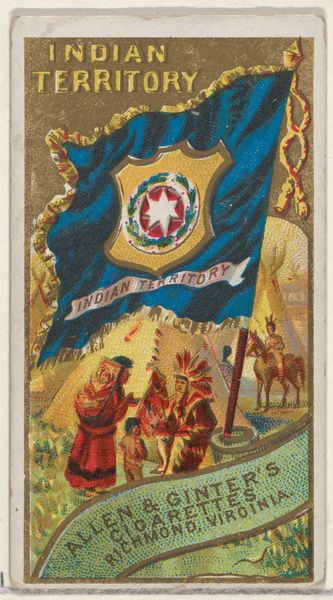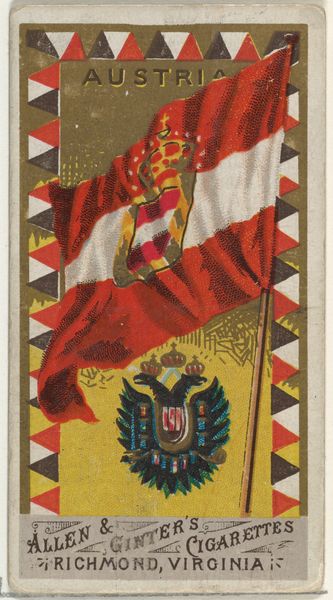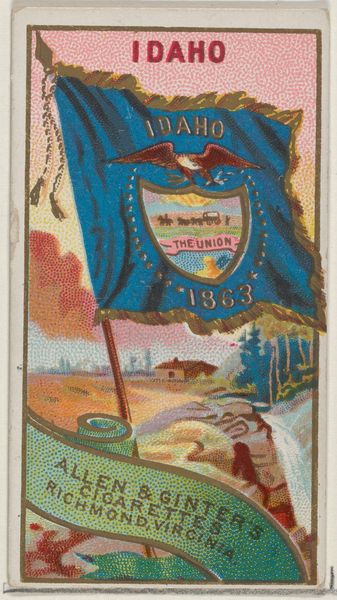
Denmark, from Flags of All Nations, Series 1 (N9) for Allen & Ginter Cigarettes Brands 1887
0:00
0:00
drawing, graphic-art, print, poster
#
drawing
#
graphic-art
# print
#
poster
Dimensions: Sheet: 2 3/4 x 1 1/2 in. (7 x 3.8 cm)
Copyright: Public Domain
Curator: At first glance, I notice the somewhat aggressive yet traditional composition dominated by reds, whites, and golds—and also that slightly unsettling grey border. It projects a certain… old-world power, perhaps? Editor: Interesting. The print before us, titled "Denmark, from Flags of All Nations, Series 1," originated with Allen & Ginter Cigarettes around 1887. Its existence highlights how global political symbols were harnessed as promotional tools within the expanding consumer market of the late 19th century. Curator: Absolutely, these materials scream commercial intent—cheap paper stock, vibrant inks... this wasn’t about art, but mass production and wide distribution! It's designed to be collectible, to be traded. The small size is dictated by its intended insertion within a cigarette pack. Editor: Right, think about what it meant to distribute idealized representations of nations like Denmark, through the very act of selling addictive substances like cigarettes. There’s a very potent symbolism inherent in pairing national identity and commodity culture in such a direct fashion. This piece speaks to notions of cultural branding. Curator: Indeed! The choice of a specific visual language is dictated by consumer appeal. A cleaner design, instantly recognizable; this isn’t so much about the accurate display of complex symbology but about the creation of desire. Notice that simplified crest imposed upon the primary Danish flag: less intricacy makes for cheaper production costs and also more legibility at a glance. Editor: The flag itself, the Dannebrog, becomes a symbol divorced from its inherent meaning, and intertwined with global power dynamics and the history of the distribution of tobacco in the United States. Who got to collect it? Whose perceptions were shaped through its mass dissemination? These seemingly simple collectibles reflect complex societal structures and inequalities. Curator: Precisely. Its very existence tells a deeper story of commerce. By focusing on material origin and the manufacturing imperatives, we see how intertwined consumer objects were and are with sociopolitical forces. Editor: A great point; now every time I encounter similar ephemera I will try to contemplate these connections to systems of labor, distribution, and ultimately, influence.
Comments
No comments
Be the first to comment and join the conversation on the ultimate creative platform.
